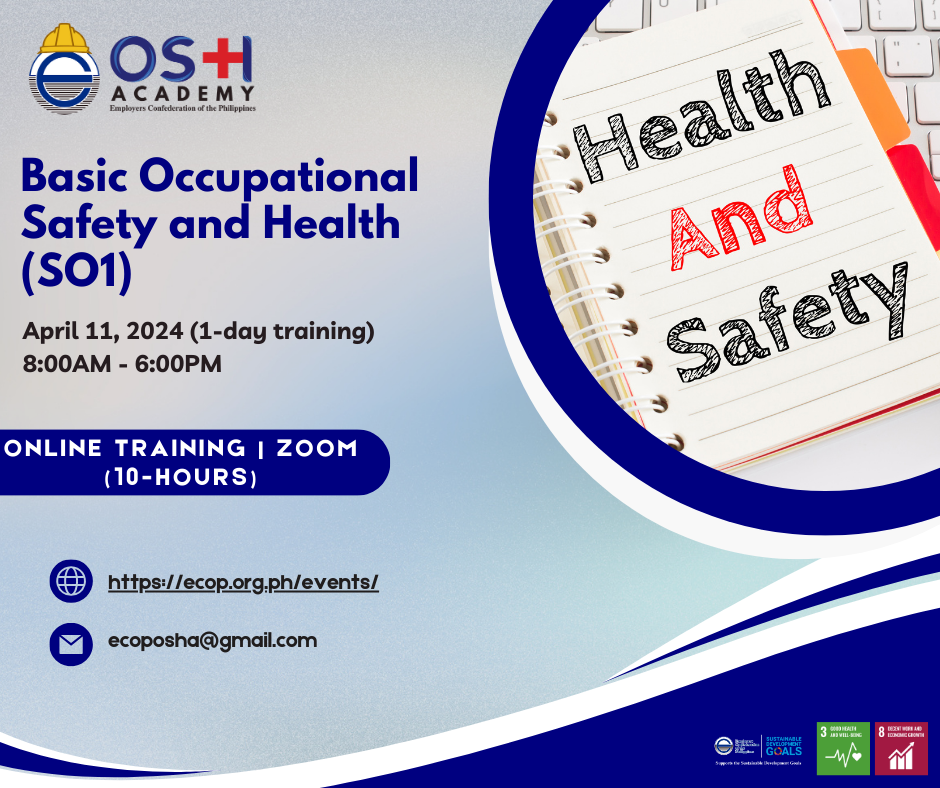Given the recent enactment of Republic Act No. 11165, otherwise known as “An Act Institutionalizing Telecommuting as an Alternative Work Arrangement for Employees in the Private Sector,” and pending the issuance by the Department of Labor and Employment (DOLE) of the Implementing Rules and Regulations (IRR), some enterprises are already practicing telecommuting arrangements.
This can be gauged from the results of a survey administered by the Employers Confederation of the Philippines (ECOP) to its members to beef up its inputs as the DOLE kicked off consultations among partners to pave the way for the formulation of the IRR soonest.
The new law defines telecommuting as “a work arrangement that allows an employee in the private sector to work from an alternative workplace with the use of telecommunication and/or computer technologies.”
The survey, conducted from 11 February to 4 March 2019 with 98 respondents, had 56% of the respondents from the large-scale enterprises, followed by 27% small scale enterprises, and 17% medium enterprises.
Out of the 98 respondents, 28 implement a telecommuting or telework arrangement. Six (6) of the companies with telecommuting come from the IT/BPM industry, five (5) from the consultancy industry, and four (4) from the trade industry. In terms of employment size, the majority (64%) are SMEs, 46% of which classify themselves as small.
In terms of industry distribution, 20% were from manufacturing, 11% from the IT/BPM, and 10% from services.
The telecommuting arrangement of most companies cover only managerial employees. In terms of employment status, consultants and project staff are also allowed to telecommute.
The respondents were asked to cite reasons for adopting telecommuting in their companies and among the reasons given were heavy traffic to and from the workplace, for the promotion of work-life balance and flexibility, business need (e.g. multinational companies with operations in different time zones), and enhancement of employee engagement and retention.
More than three-fourths (86%) answered that telecommuting employees receive the same benefits as that of their non-telecommuting counterparts. For companies which responded otherwise, telecommuting employees are no longer entitled to transportation and meal allowances, overtime pay, and additional pay for additional days worked.
Respondents were asked if the companies have encountered differences in the interpretation of the telecommuting/work-from-home policy, only 36% have encountered such situations. The nature of the grievances are as follows: filing and payment of overtime; the need for employee to stay connected and be contactable during work hours; determination of work hours/rest hours; and need to define company liability for employees practicing telecommuting.
The survey results also indicated some employee benefits from telecommuting such as: allows employees to work amidst treatment for medical conditions/illnesses; promotes flexibility in work schedules; increases productivity and efficiency; promotes work-life balance; enhances self-esteem and confidence from feeling trusted; saves time, as well as transportation cost and meal cost; and safety from calamities and disasters.
On the other hand, telecommuting benefits for the company based on the responses are as follows: continuous operation with minimal interruption; more satisfied and productive employees; better employee engagement and retention; less work-related casualties and injuries; savings on operational costs; and optimization of working space (e.g. seating arrangements).
Around 87% of the respondents expressed openness to the idea of implementing telecommuting/work-from-home scheme in the future on condition that the following are available: appropriate equipment; better internet connection; software for mo0nitoring working hours and output; best practices/benchmarking tools from their industry; restructured organization (e.g. definition of roles and responsibilities); and guidelines and policies.
Related post:








